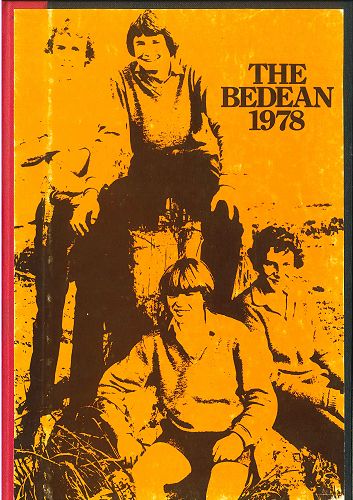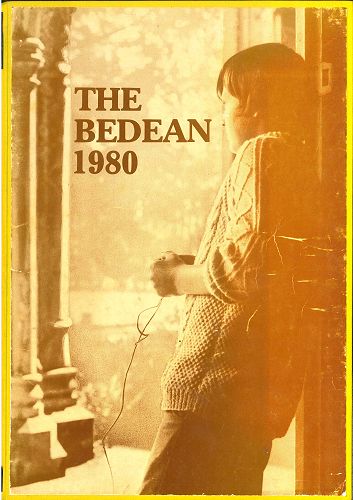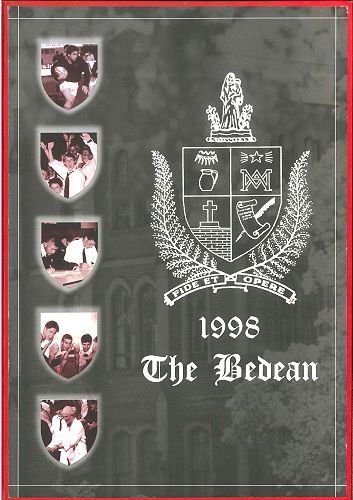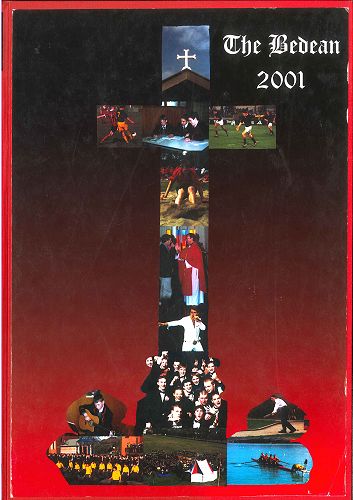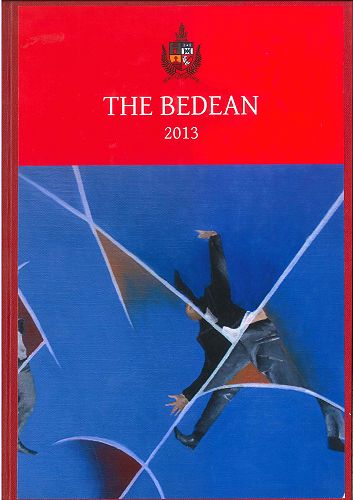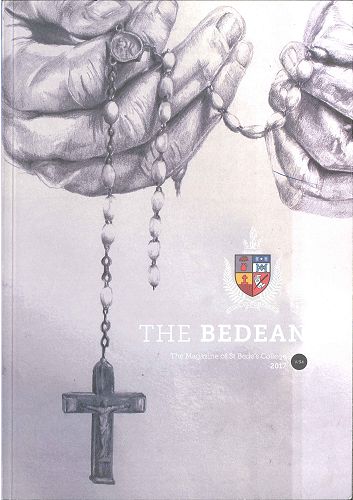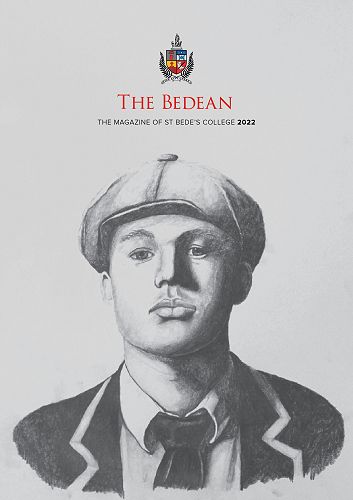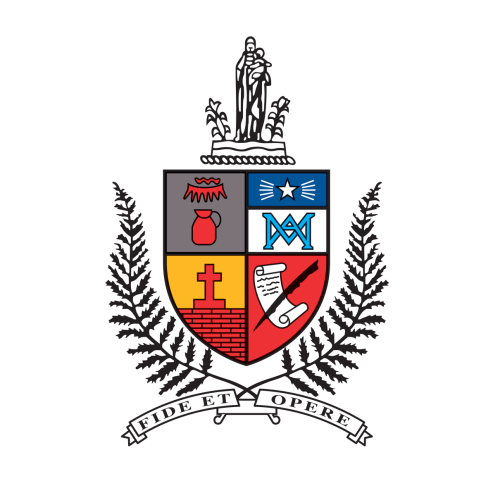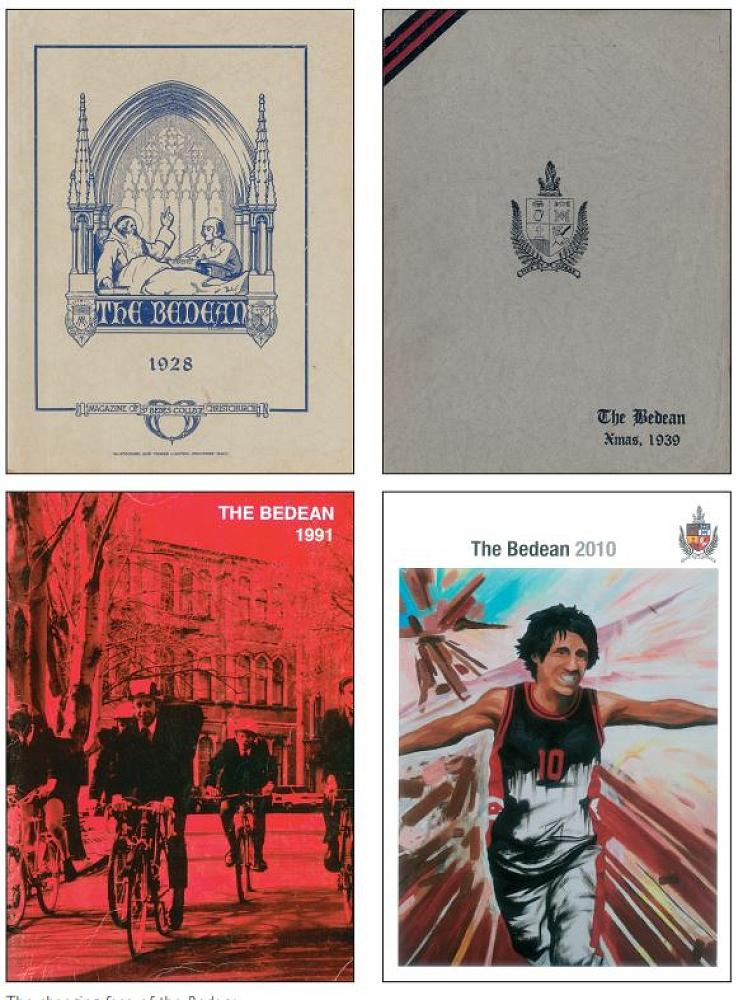
Reflections: The Bedean
2023 marks two very special milestones in the history of the St Bede's College yearbook.
This year our College magazine, The Bedean, turns 100! It was back in 1923 that the then custodians of St Bede's published the very first annual account of College life, at a cost of two shillings and sixpence for subscribers. Over the years The Bedean has evolved from a 50 page, black and white, typeset periodical with advertisements, to a digitally designed, 200+ page, full-colour publication. Thousands of hours have gone into the creation of The Bedean over the years, work that provides a unique window into the past for our old boys, students and their whanau, staff, and historians.
It seems only fitting on its 100th year anniversary, that we are able to announce an exciting 'new chapter' for The Bedean. Early this year the Archives team submitted a grant application to NZ Lotteries to help them fund the digitisation (the process of copying and converting information into a digital format) of our Bedeans from 1923 through to 2021. Having kept our fingers and toes crossed over subsequent months, it was with great excitement and celebration we learnt early this month that our grant application had been approved!
Our hope is that the digitisation of The Bedean will not only ensure these historical documents are preserved for the generations to come, but also that we will now be able to make our full collection of The Bedean available for readers online. We look forward to keeping our school and old boy community abreast of the progress of this project over the coming months.
"Having The Bedean digitised is going to be a valuable resource for our College community. It will be so helpful for researchers such as myself, and others, as they will be fully word searchable which will make finding specific information so much easier rather then spending hours trawling through the physical copies" says Emily Rosevear, Archivist.
To celebrate the 100 years of The Bedean, below we have included David McCarthy's short history of the yearbook taken from the St Bede's College centennial book 'Faith of Our Fathers' and have added in some interesting excerpts:
The Bedean
An annual publication of reflections on college life was not a priority for (Rector) Charles Graham, who was still struggling to establish the credentials of the new college, so it was not until 1923 that the first Bedean appeared, under the direction of Fr Alf Cullen, assisted by senior students. Perhaps the delay was also because the college was still small in its first years at Papanui and there was not a great deal to report at the time, especially not the sometimes-embarrassing scores against the First XV. The successes of 1923, especially in the sporting arena, triggered the innovation. The magazine was printed by G.W. Russell Ltd, at the offices of The Spectator in Gloucester St. The 1923 Bedean, which briefly covered the first three years at Papanui, was to be the only one bound in the college colours. It had unnumbered pages and was a modest effort, although it contained information about the early days of the school that would later be valuable for historians.
Excerpt from the 1923 Bedean:
This is our first Magazine. It is therefore small in size, and perhaps weak in literary merit; but, we have not made it a happy hunting ground for the literary and artistic efforts of accomplished journalists. The reader will search in vain for mellifluous poem or transcendent thesis. It is written almost entirely by the boys. It is an honest endeavour to portray College life and College thought - and as such we make no apology for it. It is, consequently, primarily of interest to the boys themselves, but we feel confident that all our friends will enjoy it and look with benevolent eye upon this, the first attempt of inexperienced but enthusiastic youth to walk in the footsteps of Delane, Belloc and Horace Greely.
We do not know whence arose the custom of publishing a School Magazine. We ourselves disclaim all responsibility. But for conviction, we have fought against this pernicious habit, we have, we have patiently answered the ceaseless questions of curious friends and ignored the supercilious scoffings of sister schools; and now, reluctantly, but we hope gracefully, we submit to convention. Therefore, however bad this Magazine be, however little it deserve publication, no one can justly blame us.
Art paper was used in 1924 (Fr Cullen and Pat Barrett were editors) and the skills of local artist E.R. Leeming were employed, with drawings at the head of various sections and a cover drawing of St Bede and his scribe, which was retained for some years and then used as the frontispiece, finally being replaced in 1967 with a lithograph of Bede at work with the scribe. In 1927, for economic reasons, the section-heading drawings were discontinued but a frontispiece picture was added 1929, when Fr Joe Cullen took over. He moved the Bede and Scribe drawing from the cover to the frontispiece. The cover was buff in colour, featuring the college colours in the top left-hand corner, an enduring innovation. The following year the college crest replaced the title on the centre of the cover and this format was retained until modern times. A grey cover replaced that through the Depression years and remained in vogue with minor variations for 40 years. The cost during this decade was three shillings and sixpence.
Excerpt from the 1931 Bedean about swimming sports (a Community Office favourite):
"The best performances of the meeting were this year, as last, to the credit of J McDonald. Both in swimming and diving he was unbeatable. He added to the enjoyment of the meeting by doing the Monte Cristo trick (which had him securely tied in a sack and thrown into the water from the top diving board) - but on this occasion the sack was soaked with petrol. A blaze of fire! A leap of ten feet into the water! And at long last up came MacDonald with the empty sack in his hands!"
The Bedean generally tended to reflect the personality of the editors. In the Buckley Monaghan-Cullen eras, especially the latter, there was a light-hearted approach combined with many contributions from the boys themselves – a reflection, perhaps, of a smaller roll and a more personal atmosphere. Maurice Dowling then edited the magazine until his appointment as rector, when Fr Burke took over until 1941. In the Burke period there was a heavy accent on old boys and their activities, a reflection of the fact that they largely financed the publication and it was as much for old boys as present pupils. Hardworking contributors like Ray Boland compiled pages of painstaking individual updates about old boys: where they were, what they were doing and their activities with the Association, a trend that continued until after the 1945 jubilee.
Excerpt from the 1945 Bedean:
After the Jubilee the Old Boys seem like a giant refreshed or like a parish after the stirrings of a mission. New fervor and loyalty have been engendered as well as a sense of solidarity and strength. The gathering of so many from all parts if New Zealand, fellows we had not seen since schooldays, fellows who perhaps had not seen the College since they have left it, gave us for several days the thrill of happy meetings and the joy of pleasant reminiscence.
Pricing changes and the rapid post-war growth in roll numbers, which created the need for more space to adequately record the year’s events, saw the Bedean settle into a formula that would last through to the late 1970s. Accent tended to be on sporting and academic records and class and sporting photographs. Maurice Dowling took up the editorship again in 1948 and noted that the magazine, ‘while for the most part has been about the boys has not been so much by the boys. It has become a more dignified publication but has lost something of its originality, freshness and humour. It is a pity, moreover, if the magazine has ceased to be such a valuable means of stimulating the boys to write.’ In the same edition he published an overview of the magazine during the previous 25 years: ‘It has provided a readable and well-illustrated chronical of life at St Bede’s in which every boy has, as far as possible, been mentioned. It has been effective as an advertising medium, carrying far afield a knowledge of the College and its way of life. It has played an important role in preserving College traditions and our distinctive Bedean spirit.’ For most of these years Frank McGregor was the indefatigable photographer of class and sports teams. Some years he was allowed to return to the mid-1930s practice, when classes were photographed outside in a less stereotyped situation, but increasing roll numbers put an end to artistic innovation.
The Dowling formula of the late 1940s set the tone for the next two decades and from the boys’ desire to write and inform emerged the Bedean Times. Many of the boys associated with that publication over the years were also compilers of the Bedean staple ‘The Chronicle’, a week-by-week, even day-by-day narrative reporting on the college year, which restored much of the humour of earlier decades.
Excerpt from the 1972 Bedean in 'The Chronicle':
July 22nd: The Rector is looking for an under-15, very intelligent, boy to go into a quiz. Unfortunately, no such boy exists at the moment.
Fr Cleary looked after the advertising and Fr Hogan also played a valuable role. By 1977 ‘The Chronicle’ was taking up a large chunk of the 92-page publication. The magazine had reached a peak size in 1969, with 156 pages. The previous year Pegasus Press had taken over the printing duties and a decade later Baty Print did the honours.
In 1984, under the direction of Fr Barry Leech, who took over from Fr Manning, the publication became A4 size and the cover photo was a composite of a group of boys rather than carrying a religious theme or coat of arms. St Bede was nowhere in evidence and the magazine carried a photo and achievements of each fifth-year student. Advertisements were full-page affairs and throughout the magazine there was an emphasis on presentation, including many photographs, rather than detailed recording. This perhaps also reflected the more artistic tastes of Rector Gerry Mills, where tradition had ruled most of his predecessors. In 1983, during the Mills regime, the current year’s prizegiving was at last included, ending decades of each magazine containing only the previous year’s awards. Fr Leech’s changes were a reflection of changes in the general media but found critics among those who set store by the written record. Nonetheless, the 1980 Bedean moved further in the photographic direction and ‘The Chronicle’ was reduced to two pages (there had been 21 in 1969), with no entries at all for some months. After Brian Cummings became editor, however, there was in 1982 a longer ‘Chronicle’, fewer and smaller photographs and more written content, although the covers featuring photos of college life remained. The large format meant pages were again below 100.
Excerpt from the 1984 Bedean in 'The Chronicle':
February 7: Fr Manning learns that he hasn't lost all of his power over students. One third former, having earned his Dean's displeasure, is kept in Room 13 after school and told to "stay there until I return". Fair enough, except that Fr M forgot to return; however obedience is a virtue, and the third former was still there at 6:30pm when his parents arrived concerned about their son's whereabouts. At least Fr. M had the grace to look sheepish!"
The editorship of the Bedean was an assignment handed out at the beginning of the year, though Gary Lennon recalled that in more recent years the editor has sometimes had to make a much later start: ‘It was generally kept to the English Department and most there had a go at it at one stage or another,’ said Lennon, an unabashed fan of the traditional format for the magazine. The modern Bedean is much more of a team effort than in its early days. For all the innovations, a study of the 1923 Bedean and the 2010 Bedean reflects enough similarities of content to argue that the strong tradition of the college magazine survived in many important areas.
Over the past decade, The Bedean has been edited by many dedicated people with support and contributions from staff and students, with design and layout outsourced. In 2022 the appointment of a Marketing and Design Coordinator, old boy Matthew Grueber, brought The Bedean full publication process, minus printing, inhouse. We look forward to taking The Bedean into the future.
Gallery
